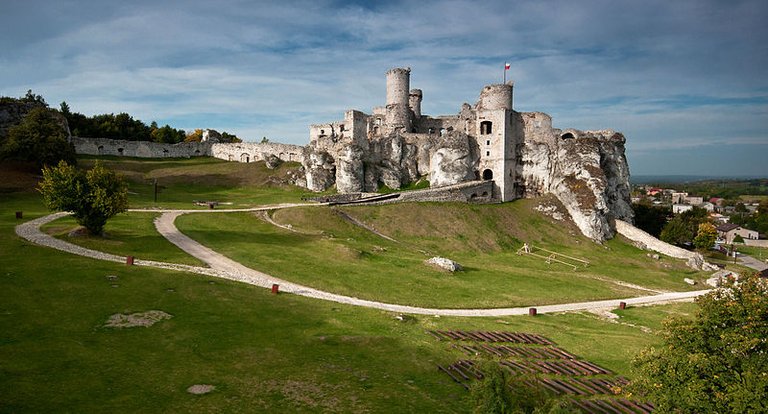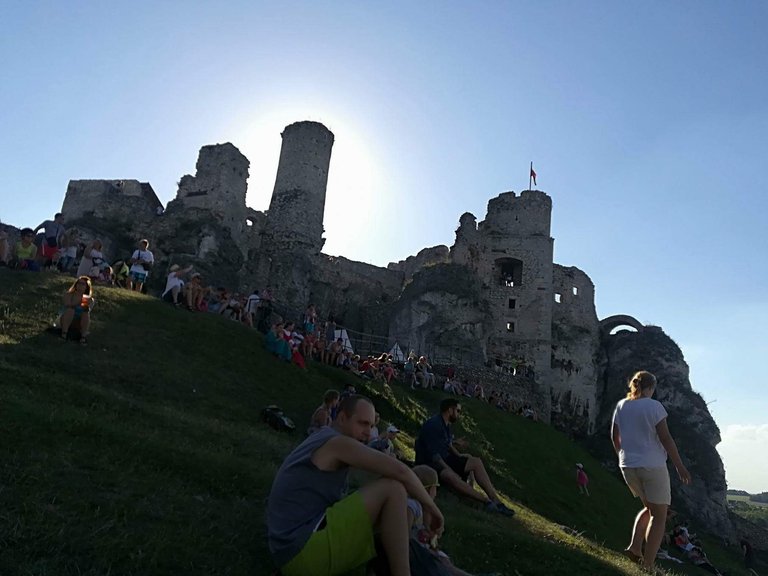The first fortifications in the place of the later castle stood during the reign of Bolesław Krzywousty. The Tartar invasion equaled them in 1241. In their place in the mid-fourteenth century, a Gothic castle was built - the seat of the knight family of Włodków Sulimczyków. The stronghold was perfectly integrated into the area: on three sides, it was covered with high rocks, and the perimeter was closed by a stone wall, the entry led by a narrow gap between the rocks.
In 1470, the castle and neighboring landed estates were bought by Sulimów, a wealthy Krakow townspeople, Ibram and Piotr Salomon. Then, from the Salomonowicz family, the properties of Ogrodzieniec became the property of Jan Feliks Rzeszowski, Przemyśl parish priest and Cracow canon from Przybyszówka. The brothers of Jan - Andrzej and Stanisław Rzeszowski were also owners of the castle at that time. The next owners were Pileccy, then Chełmińscy. In 1523, the castle of Ogrodzieniec was bought by Jan Boner, burgrabia, and Kraków's żupnik. After the death of Jan Boner, the castle was taken over by his nephew Seweryn Boner, who in 1530-1545 built a Renaissance castle on the site of a medieval fortress
Then, in 1562, the castle was taken over by Jan Firlej, the grand marshal of the Crown, as the husband of Zofia, the daughter of Seweryn Boner. In 1587, the castle was taken over by Archduke Maksymilian, the pretender to the Polish throne, and in 1655 was partially burned by the Swedish army, which was stationed there for almost two years, ruining a large part of the buildings. The next owner was in 1669 Stanisław Warszycki, the castellan of Cracow. The castle of Ogrodzieniec was partly rebuilt after its reign after the destruction of the Swedes.
Around 1695, the castle passed into the hands of Męciński family. Then, in 1702, he suffered greatly from the fire caused by the Swedish army, Karl XII, who consumed more than half of the castle. Practically no reconstruction was undertaken. The castle around 1784 from the Męciński family was bought by Tomasz Jakliński, but not caring about its technical condition, led to a complete ruin. The last inhabitants left the ruined stronghold around 1810. Ludwik Kozłowski was the next owner of Ogrodzieniec. This completely did not count with the historic value of the building, destroying the walls in order to obtain building material and selling the castle furnishings to the Jews.
The last owner of the stronghold was the Wołczyński family who came from the nearby backwater. After the war, the facility was nationalized. Conservation works aimed at preserving the castle in the form of a permanent ruin and making it available to visitors began in 1949 and were completed in 1973.
In the lowest storey of chicken feet, fragments of Renaissance frescoes depicting lilies have been preserved.

Poland is on my list to Visit, so will add this to my trip when I do visit
Ouuuu, i wish I would be here with my camera and popcorn :)